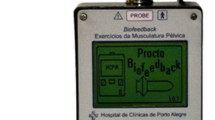Abstract
The medium-term effectiveness of biofeedback training for faecal incontinence was studied. Seventy-eight patients with minor incontinence underwent 4 supervised biofeedback sessions, and were followed for a minimum of 2 years. Results were correlated to aetiology, severity, anorectal physiological and endoanal ultrasound measurements. Four weeks following completion of the sessions, 59 patients (76%) improved significantly, 13 (17%) did improved slightly and 6 (8%) not change. At latest follow-up (mean, 26.3 months), only 10 (13%) had regressed, but they recovered after repeat biofeedback. Incontinence associated with previous colonic and rectal resection or perianal surgery responded significantly better to the training than patients with primary neurogenic incontinence (p=0.001). Patients with endoanal ultrasound sphincter defects also did better than those with primary neurogenic incontinence (p=0.02). In conclusion, biofeedback training is an efficient therapy in the majority of patients with minor faecal incontinence.
Similar content being viewed by others
Author information
Authors and Affiliations
Additional information
Received: 19 January 2001 / Accepted in revised form: 15 May 2001
Rights and permissions
About this article
Cite this article
Kraemer, M., Ho, YH. & Tan, W. Effectiveness of anorectal biofeedback therapy for faecal incontinence: medium-term results. Tech Coloproctol 5, 125–129 (2001). https://doi.org/10.1007/s101510100013
Published:
Issue Date:
DOI: https://doi.org/10.1007/s101510100013




